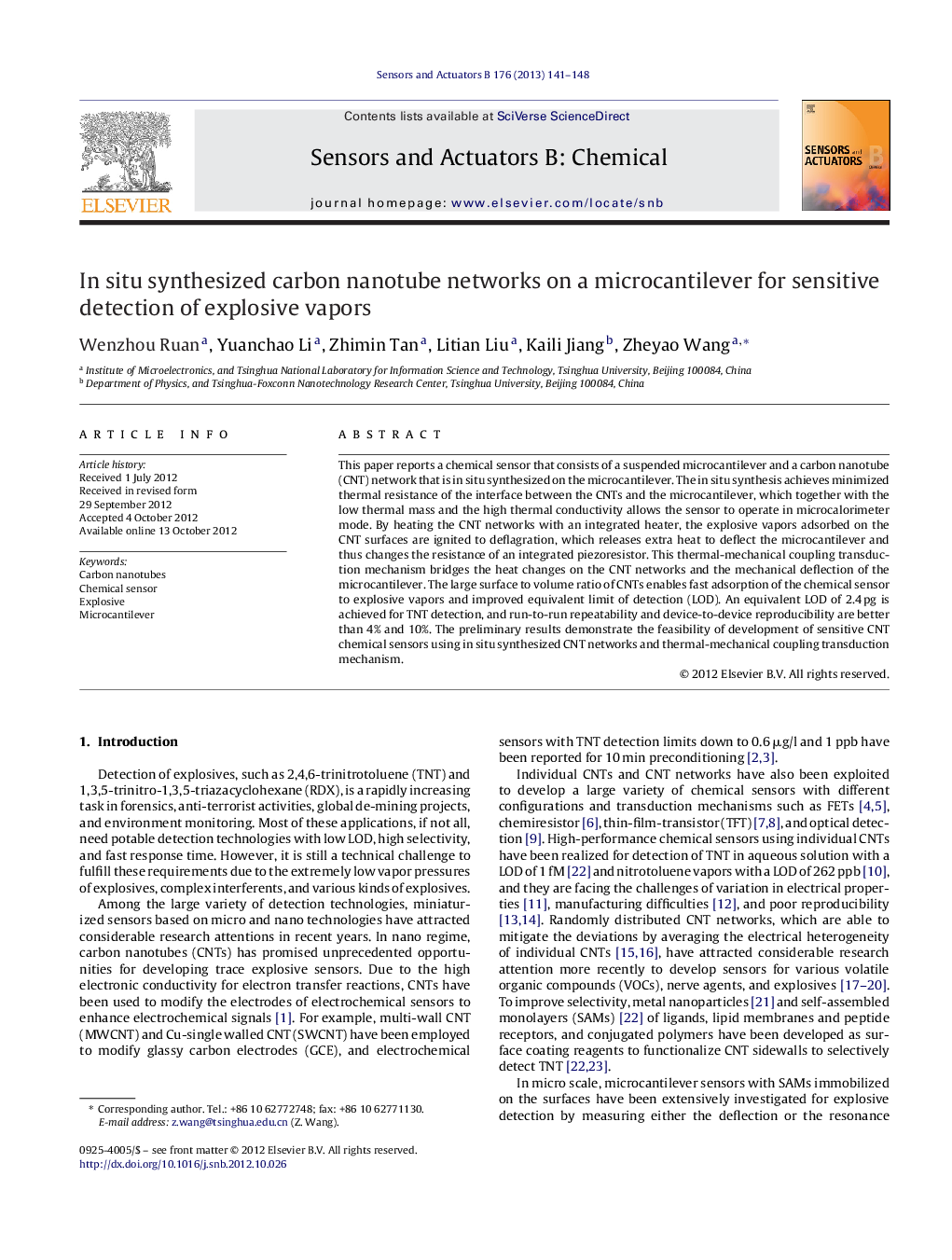| Article ID | Journal | Published Year | Pages | File Type |
|---|---|---|---|---|
| 7148941 | Sensors and Actuators B: Chemical | 2013 | 8 Pages |
Abstract
This paper reports a chemical sensor that consists of a suspended microcantilever and a carbon nanotube (CNT) network that is in situ synthesized on the microcantilever. The in situ synthesis achieves minimized thermal resistance of the interface between the CNTs and the microcantilever, which together with the low thermal mass and the high thermal conductivity allows the sensor to operate in microcalorimeter mode. By heating the CNT networks with an integrated heater, the explosive vapors adsorbed on the CNT surfaces are ignited to deflagration, which releases extra heat to deflect the microcantilever and thus changes the resistance of an integrated piezoresistor. This thermal-mechanical coupling transduction mechanism bridges the heat changes on the CNT networks and the mechanical deflection of the microcantilever. The large surface to volume ratio of CNTs enables fast adsorption of the chemical sensor to explosive vapors and improved equivalent limit of detection (LOD). An equivalent LOD of 2.4Â pg is achieved for TNT detection, and run-to-run repeatability and device-to-device reproducibility are better than 4% and 10%. The preliminary results demonstrate the feasibility of development of sensitive CNT chemical sensors using in situ synthesized CNT networks and thermal-mechanical coupling transduction mechanism.
Related Topics
Physical Sciences and Engineering
Chemistry
Analytical Chemistry
Authors
Wenzhou Ruan, Yuanchao Li, Zhimin Tan, Litian Liu, Kaili Jiang, Zheyao Wang,
